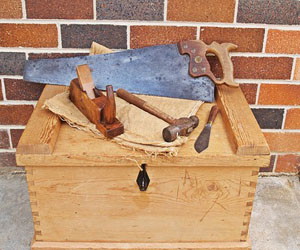


Elevating Woodworking To The Next Level
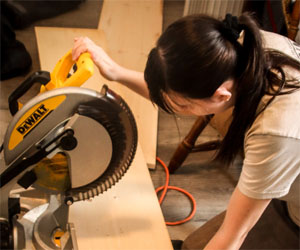
Hardwood, known for its durability, exquisite grain patterns, and rich colors, is a favored material in the world of woodworking. Crafting with hardwood elevates the art of woodworking to new heights, producing stunning creations that stand the test of time. In this article, we delve into the unique aspects of crafting with hardwood and why it has become a preferred choice for woodworkers and artisans.
Unparalleled Beauty: Hardwood is prized for its unparalleled beauty. The wood's grain patterns, color variations, and intricate figuring make it an ideal choice for crafting. Whether you're creating fine furniture, ornate carvings, or decorative inlays, the natural aesthetics of hardwood add a level of elegance and sophistication that is unmatched.
Durability And Longevity: Hardwood is renowned for its durability. It can withstand the test of time, making it an excellent choice for heirloom-quality pieces. Items crafted from hardwood are not only beautiful but also practical and built to last. This longevity is one of the reasons why woodworking enthusiasts and artisans alike gravitate towards hardwood.
Rich Selection Of Species: One of the remarkable features of crafting with hardwood is the vast selection of wood species available. Each species offers unique characteristics in terms of color, grain, hardness, and workability. From the deep, warm hues of mahogany to the light, creamy tones of maple, there is a hardwood species to suit every project and style.
Versatile Applications: Hardwood is highly versatile and can be used in a wide range of applications. It's suitable for crafting fine furniture, cabinetry, flooring, musical instruments, and even intricate carvings. Its versatility enables artisans to explore various woodworking techniques and create diverse types of pieces, from functional to decorative.
Challenges And Rewards: Crafting with hardwood presents challenges due to its density and hardness, which can make it more difficult to work with compared to softer woods. However, it's precisely these challenges that lead to great rewards. Mastering the art of crafting with hardwood demands precision, skill, and patience, resulting in pieces that exhibit exceptional craftsmanship.
Environmental Considerations: In today's world, sustainability is a significant concern. Many woodworkers and artisans opt for responsibly sourced hardwood to ensure their creations are environmentally friendly. Responsible forestry practices and certification programs ensure that hardwood is harvested sustainably, minimizing the impact on forests and ecosystems.
Artistic Expression: Crafting with hardwood is a means of artistic expression. Artisans can take advantage of the unique characteristics of hardwood to design and create custom pieces that reflect their artistic vision. The woodworking process allows for creative exploration, from intricate inlays to sculptural elements, bringing an extra layer of artistry to each creation.
Crafting with hardwood is an art form that combines natural beauty, durability, and versatility. Whether you're an experienced woodworker or a beginner, hardwood offers a world of possibilities for creating functional, artistic, and long-lasting pieces. The timeless elegance and inherent strength of hardwood make it an ideal choice for those who seek to elevate their woodworking projects to a higher level of craftsmanship and aesthetics.
Elevating Ambiance And Well-Being In Your Space
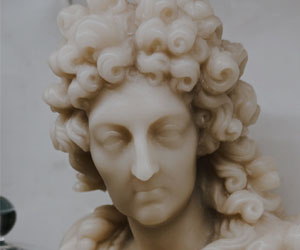 Fragrance Selection:The heart of any scented candle design is the fragrance. It sets the tone and evokes specific emotions. Whether you prefer the calming scent of lavender, the invigorating aroma of citrus, or the warmth of vanilla, the choice of fragrance is a crucial step in design. It's about more than just smell; it's about creating an ambiance that resonates with your space and your mood.
Fragrance Selection:The heart of any scented candle design is the fragrance. It sets the tone and evokes specific emotions. Whether you prefer the calming scent of lavender, the invigorating aroma of citrus, or the warmth of vanilla, the choice of fragrance is a crucial step in design. It's about more than just smell; it's about creating an ambiance that resonates with your space and your mood.
Wax And Color: The choice of wax and color is another essential aspect of design. The wax type can influence the candle's texture and burn time. Different colors can evoke different feelings. Soft pastels for a serene atmosphere, bold hues for a dramatic touch, or earthy tones for a cozy and grounded environment. The color should complement the chosen fragrance and the intended ambiance.
Container And Packaging: The vessel that holds the scented candle is more than just a practical element; it's a design statement. Containers come in a variety of shapes, sizes, and materials, from glass jars to tin cans, and even ornate ceramic pots. The packaging, including labels and boxes, can add a layer of elegance and sophistication to the overall design.
Wicks And Flames: The wick's size and type can influence how the candle burns and distributes the fragrance. Double-wicked candles can create a more intense scent release, while single wicks are ideal for a subtler ambiance. The design extends to the flame itself; many scented candles offer an aesthetic touch with wooden wicks that crackle gently as they burn.
The Power Of Scented Candle Design
Scented candle design is more than just aesthetics; it's about curating an experience. Here are some of the ways in which well-designed scented candles can elevate your space and well-being:

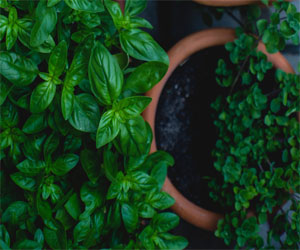
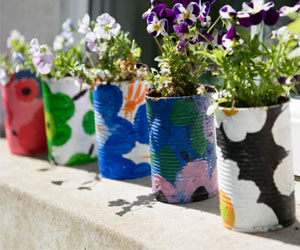
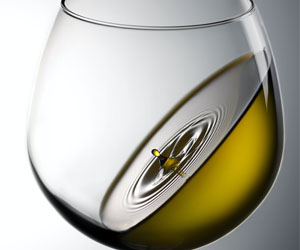
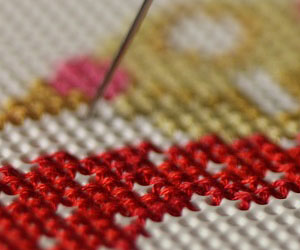

Nurturing Your Skin And The Planet
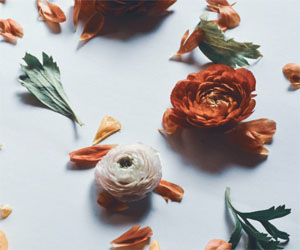 Biodegradable Packaging: Green skincare products are packaged in eco-friendly containers that are either biodegradable or recyclable. These efforts aim to reduce the vast amounts of plastic waste that end up in our oceans and landfills.
Biodegradable Packaging: Green skincare products are packaged in eco-friendly containers that are either biodegradable or recyclable. These efforts aim to reduce the vast amounts of plastic waste that end up in our oceans and landfills.
Transparency: Green skincare brands tend to be more transparent about their ingredients, sourcing, and production methods. This transparency empowers consumers to make informed choices about the products they use.
Toxin-Free Formulas: Many mainstream skincare products contain potentially harmful chemicals, such as parabens, phthalates, and sulfates. Green skincare, on the other hand, avoids these toxins and focuses on safer, more natural alternatives.
Holistic Approach: Green skincare often takes a holistic approach to beauty. It emphasizes that what goes on your skin can affect your overall well-being. It encourages mindfulness about the products you choose and their potential long-term effects.
Gentle On Sensitive Skin: Green skincare is typically gentle on sensitive skin. Natural ingredients and fewer harsh chemicals reduce the likelihood of skin irritations, allergies, and breakouts.
Efficacy And Results: Many people believe that natural products are less effective than their chemical-laden counterparts. However, green skincare proves otherwise, with numerous natural ingredients known for their therapeutic and rejuvenating effects.
Supporting Ethical Practices: Green skincare often supports ethical practices, such as fair trade and sustainable farming. By buying these products, consumers contribute to a more equitable global economy.
Unearthing Value In Vintage And Thrifted Finds
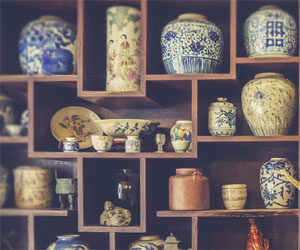 Unique Finds: Secondhand treasures are unique and distinct from mass-produced, contemporary goods. Vintage items often feature designs, craftsmanship, and aesthetics that are no longer readily available in modern markets.
Unique Finds: Secondhand treasures are unique and distinct from mass-produced, contemporary goods. Vintage items often feature designs, craftsmanship, and aesthetics that are no longer readily available in modern markets.
Quality Craftsmanship: Many secondhand items were created during eras when quality and durability were highly valued. These pieces often exhibit superior craftsmanship, making them appealing to those who appreciate well-made goods.
Environmental Consciousness: Secondhand treasures align with eco-conscious lifestyles. By buying used items, consumers reduce the demand for new manufacturing and help minimize waste and carbon emissions.
Historical And Cultural Significance: Secondhand treasures carry history and cultural significance. Each item has its own story and represents a slice of the past, offering a tangible connection to bygone eras.
What Can Be Found
The variety of secondhand treasures is astounding. These items span numerous categories, including:
Clothing: Vintage clothing, including dresses, suits, and accessories, allows wearers to showcase unique and timeless style.
Furniture: Secondhand furniture pieces, such as mid-century modern chairs, antique tables, and vintage cabinets, add character and functionality to homes.
Collectibles: Vintage toys, records, antique books, and rare coins are sought-after collectibles that capture nostalgia and historical value.
Home Decor: Secondhand home decor items, like vintage artwork, retro kitchenware, and decorative glassware, infuse charm and personality into living spaces.
Stitching Timeless Craftsmanship
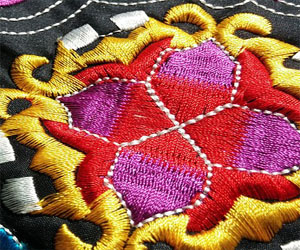 Historical Roots: The origins of traditional needlework can be traced back centuries, with evidence of embroidered textiles dating as far back as the ancient Egyptians and Chinese dynasties. Throughout history, women (and men) have used their skills in needlework to embellish clothing, linens, and decorative items, often showcasing cultural motifs and symbols unique to their regions.
Historical Roots: The origins of traditional needlework can be traced back centuries, with evidence of embroidered textiles dating as far back as the ancient Egyptians and Chinese dynasties. Throughout history, women (and men) have used their skills in needlework to embellish clothing, linens, and decorative items, often showcasing cultural motifs and symbols unique to their regions.
A Cultural Tapestry: Traditional needlework is a rich tapestry that weaves together the customs, beliefs, and aesthetics of different cultures. From the vibrant colors of Mexican embroidery to the delicate stitches of Japanese sashiko, each style carries a piece of its cultural heritage. It's a means of preserving and passing down the stories of a community, one stitch at a time.
Family Heirlooms: One of the most beautiful aspects of traditional needlework is its role in creating family heirlooms. Hand-embroidered tablecloths, quilts, and samplers have been cherished and passed down through generations, connecting the past with the present and ensuring that the skills and artistry of ancestors live on.
A Blooming Start To Your Green Journey
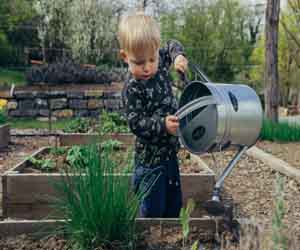 Planning Your Garden
Planning Your Garden
A well-thought-out plan can make gardening more enjoyable and less overwhelming:
Design: Sketch your garden layout and decide where you want to place different plants. Consider factors like plant height, growth habits, and aesthetics.
Plant Selection: Choose plants that are suitable for your climate, soil type, and level of maintenance. Local garden centers can provide helpful recommendations.
Maintenance Schedule: Create a maintenance schedule that includes watering, fertilizing, and pruning. Regular tasks will help your garden flourish.
Essential Gardening Tools
Every gardener needs a basic set of tools:
Hand Trowel: For digging small holes and transplanting seedlings.
Pruning Shears: To trim and shape plants.
Gloves: To protect your hands from dirt and thorns.
Watering Can Or Hose: For proper irrigation.
Garden Rake And Hoe: For weeding and soil preparation.